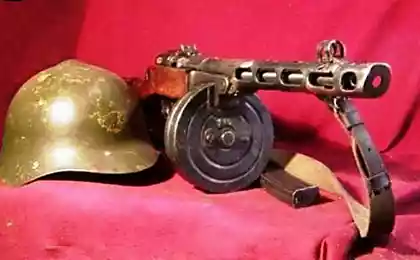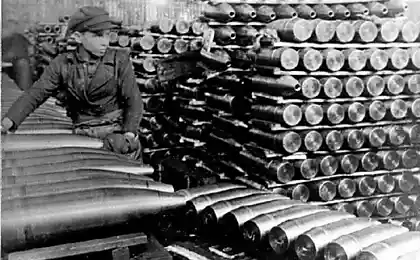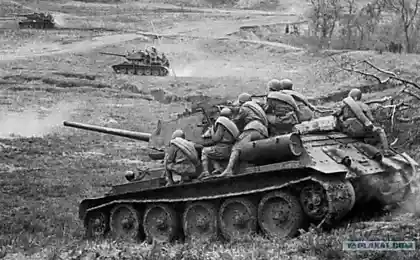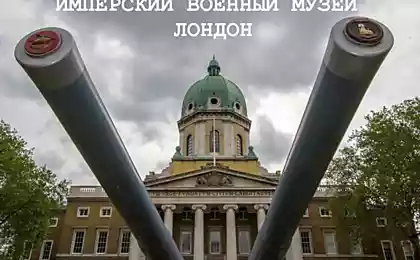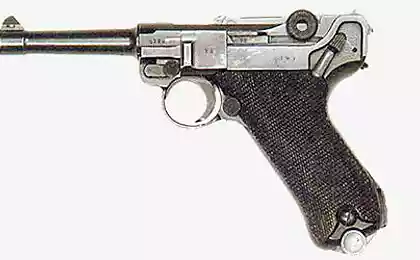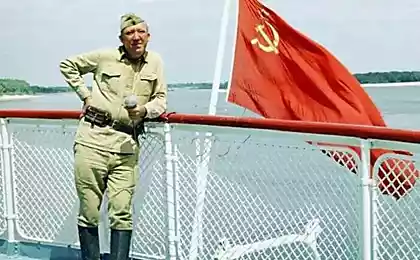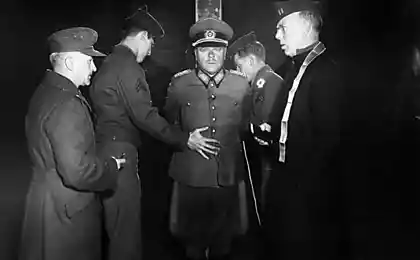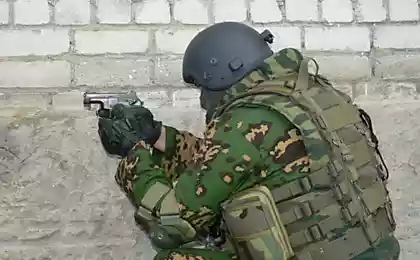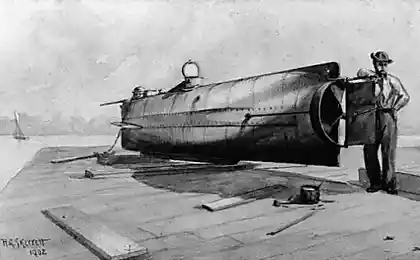1004
Experimental weapons of World War II (9 photos)
During World War II, it has been established Katyusha rockets, bazookas, T-34, which played a decisive role in the fighting. But most of the projects have remained on paper or in the form of prototypes ...
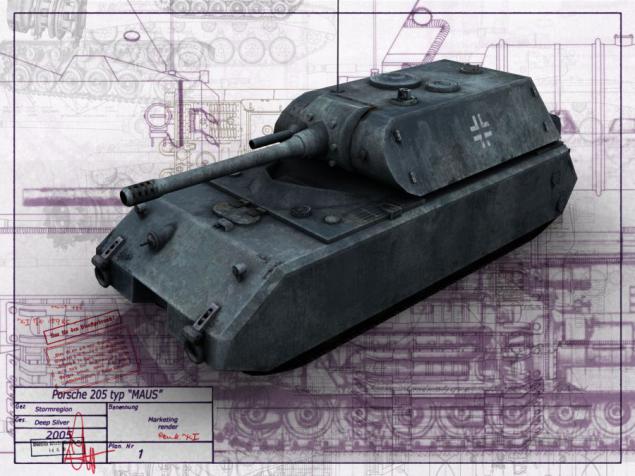
USS "Sinama»
In Japan, due to the geographical position, during the Second World War, it focused on the development of the Navy and Air Force. Among the ships were put into operation a giant battleships "Yamato" and "Musashi". Third unfinished battleship during the war already decided to convert to an aircraft carrier.

Since the project completely changed the ship was no longer possible, "Sinam" retained some uncharacteristic carrier reservation. But displacement of almost 72 thousand tons of the ship could carry no more than 47 aircraft, while the aircraft carriers specially constructed to transport aviation group in two more. "Sinam" and has not had time to prove himself as a fighting unit.
November 29, 1944 the unfinished aircraft carrier was attacked by an American submarine and sank after being hit by four torpedoes.
The glider Ju-322
In the event of a large-scale amphibious operations in England, the German command intended to be used gliders. Ju-322 was designed for landing and delivery of military equipment.
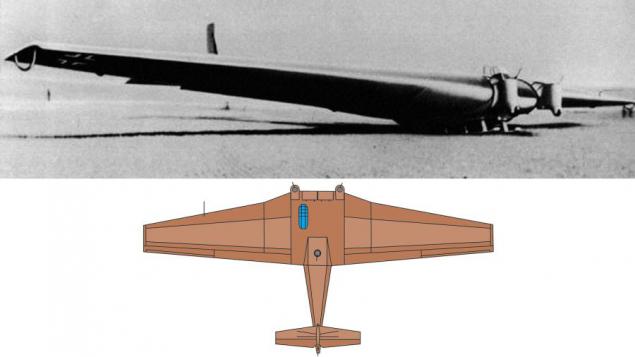
The wingspan of the world's largest airframe reached 62 meters. By 1941, in various stages of assembly is 98 gliders, and one was ready for the test. First flight immediately showed that the glider is very "capricious", and can create a number of dangerous situations during takeoff. Work on the project was delayed.
Meanwhile, the heavy losses of German paratroopers during the operation of the landing on Crete have shown weakness in gliders. In addition, the reorientation of the German war machine of war with the Soviet Union demanded to postpone the invasion of Britain. Further work on the creation of a giant glider considered unwise.
HF-7
During the fighting, the initial period of the Great Patriotic War fared tanks KV-1, which served as the basis for the creation of a number of prototypes with different weapons. Combat experience from the Red Army tank crews on the first stage of the war, has shown the need to equip troops with machine higher fire power than the series of tanks.
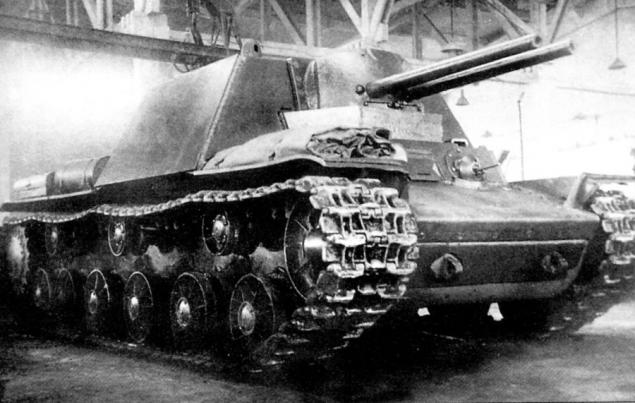
HF-7 carried one 76 mm and two 45 mm guns mounted in a fixed wheelhouse. However, due to lack of new model of special advantages over serial HF-1, HF ACS-7 was not accepted for service and was not made in large quantities. In addition, HF-7 is the latest model in the USSR armor paired with medium-caliber cannon armament in the turret or cabin.
Super-heavy tank "Maus»
At the end of 1942 in Germany began work on the creation of super-heavy breakthrough tank "Mouse." The tank must have had a powerful armor protection, and strong arms. It was built two prototypes, which were very expensive and difficult to manufacture. In addition, the huge mass movement precluded "Mouse" on the bridge.
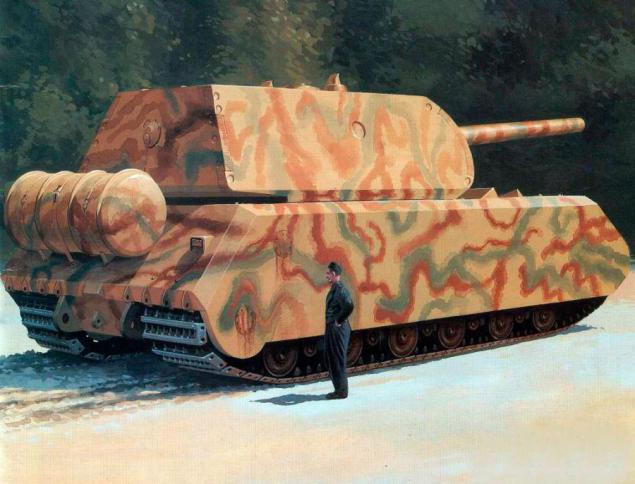
In general, the car was strong, but of little use in the conditions of the Second World War, where the main role was played by the speed of production and delivery of arms. 180-ton monsters have not had a chance to take part in hostilities. In April 1945, at the approach of the Red Army, the Germans destroyed the prototype because of the impossibility of their evacuation.
English heavy tank A-38
In England, too, tried to build heavy tanks. One of them was A-38 "Valiant". It was created as a replacement tank "Churchill". It is regarded as a weapon for the conditions of the Middle East. The rate of "Valiant" sacrificed powerful booking.

The first prototype was released by Ruston & Hornsby in mid-1944, when the fighting had already localized in Europe and in the Pacific region, and the need for specialization in the east of the tank disappeared. He became obsolete at the time of manufacture. As a result, the A-38 and has remained in the form of two prototypes.
SCS-45
It is noteworthy, but during World War II was tested prototype of the famous system carbine Simonov SKS-45. Combat experience has shown that the rifle cartridge was too powerful to be used in combat at a distance of several hundred meters - it is good for the machine gun, but usually do not need an arrow. At the other extreme low power proved yet light pistol cartridge, which was used in the sub-machine guns. "Golden mean" has become 7, 62 mm intermediate cartridge of 1943.
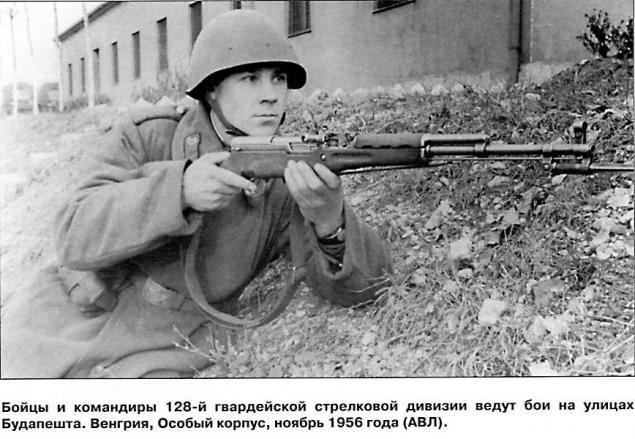
Following his example, in the future, it created a number of samples of small arms, including carbine Simonov. The first experimental batch of SCS was on the front in the summer of 1944, during the operation "Bagration" in Belarus. There's weapons has received positive reviews in the army, but the completion of the carbine was delayed for five long years. He was accepted into service until 1949.
Anti-tank gun
During World War II fame acquired Soviet anti-tank guns of Simon and Degtyareva. But there have been created and others that apply restrictions existed only as prototypes. The most successful of these was the anti-tank gun Rukavishnikova (under 12, 7 mm cartridge). The polygon report says that it passed the test with dignity, proved to be a convenient and reliable weapon, and is recommended for serial production.

Anti-tank rifle Simonov
But he had serious shortcomings, particularly small armor penetration. The enemy, on the contrary, constantly increases armor their vehicles. In the end, the serial production of guns Rukavishnikova refused. However, such a fate befell the majority of anti-tank guns, which played an important role in the first stage of the war, but in the fight with a weighted techniques were ineffective and were used mainly for transporters and defeat the enemy firing points.
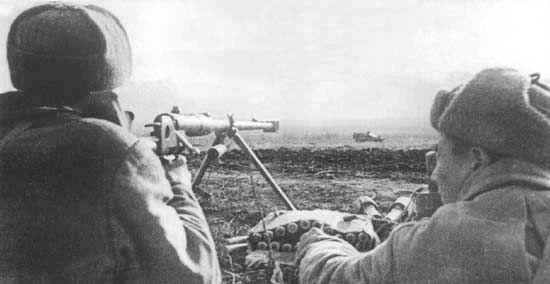
Anti-tank gun system Degtyareva

USS "Sinama»
In Japan, due to the geographical position, during the Second World War, it focused on the development of the Navy and Air Force. Among the ships were put into operation a giant battleships "Yamato" and "Musashi". Third unfinished battleship during the war already decided to convert to an aircraft carrier.

Since the project completely changed the ship was no longer possible, "Sinam" retained some uncharacteristic carrier reservation. But displacement of almost 72 thousand tons of the ship could carry no more than 47 aircraft, while the aircraft carriers specially constructed to transport aviation group in two more. "Sinam" and has not had time to prove himself as a fighting unit.
November 29, 1944 the unfinished aircraft carrier was attacked by an American submarine and sank after being hit by four torpedoes.
The glider Ju-322
In the event of a large-scale amphibious operations in England, the German command intended to be used gliders. Ju-322 was designed for landing and delivery of military equipment.

The wingspan of the world's largest airframe reached 62 meters. By 1941, in various stages of assembly is 98 gliders, and one was ready for the test. First flight immediately showed that the glider is very "capricious", and can create a number of dangerous situations during takeoff. Work on the project was delayed.
Meanwhile, the heavy losses of German paratroopers during the operation of the landing on Crete have shown weakness in gliders. In addition, the reorientation of the German war machine of war with the Soviet Union demanded to postpone the invasion of Britain. Further work on the creation of a giant glider considered unwise.
HF-7
During the fighting, the initial period of the Great Patriotic War fared tanks KV-1, which served as the basis for the creation of a number of prototypes with different weapons. Combat experience from the Red Army tank crews on the first stage of the war, has shown the need to equip troops with machine higher fire power than the series of tanks.

HF-7 carried one 76 mm and two 45 mm guns mounted in a fixed wheelhouse. However, due to lack of new model of special advantages over serial HF-1, HF ACS-7 was not accepted for service and was not made in large quantities. In addition, HF-7 is the latest model in the USSR armor paired with medium-caliber cannon armament in the turret or cabin.
Super-heavy tank "Maus»
At the end of 1942 in Germany began work on the creation of super-heavy breakthrough tank "Mouse." The tank must have had a powerful armor protection, and strong arms. It was built two prototypes, which were very expensive and difficult to manufacture. In addition, the huge mass movement precluded "Mouse" on the bridge.

In general, the car was strong, but of little use in the conditions of the Second World War, where the main role was played by the speed of production and delivery of arms. 180-ton monsters have not had a chance to take part in hostilities. In April 1945, at the approach of the Red Army, the Germans destroyed the prototype because of the impossibility of their evacuation.
English heavy tank A-38
In England, too, tried to build heavy tanks. One of them was A-38 "Valiant". It was created as a replacement tank "Churchill". It is regarded as a weapon for the conditions of the Middle East. The rate of "Valiant" sacrificed powerful booking.

The first prototype was released by Ruston & Hornsby in mid-1944, when the fighting had already localized in Europe and in the Pacific region, and the need for specialization in the east of the tank disappeared. He became obsolete at the time of manufacture. As a result, the A-38 and has remained in the form of two prototypes.
SCS-45
It is noteworthy, but during World War II was tested prototype of the famous system carbine Simonov SKS-45. Combat experience has shown that the rifle cartridge was too powerful to be used in combat at a distance of several hundred meters - it is good for the machine gun, but usually do not need an arrow. At the other extreme low power proved yet light pistol cartridge, which was used in the sub-machine guns. "Golden mean" has become 7, 62 mm intermediate cartridge of 1943.

Following his example, in the future, it created a number of samples of small arms, including carbine Simonov. The first experimental batch of SCS was on the front in the summer of 1944, during the operation "Bagration" in Belarus. There's weapons has received positive reviews in the army, but the completion of the carbine was delayed for five long years. He was accepted into service until 1949.
Anti-tank gun
During World War II fame acquired Soviet anti-tank guns of Simon and Degtyareva. But there have been created and others that apply restrictions existed only as prototypes. The most successful of these was the anti-tank gun Rukavishnikova (under 12, 7 mm cartridge). The polygon report says that it passed the test with dignity, proved to be a convenient and reliable weapon, and is recommended for serial production.

Anti-tank rifle Simonov
But he had serious shortcomings, particularly small armor penetration. The enemy, on the contrary, constantly increases armor their vehicles. In the end, the serial production of guns Rukavishnikova refused. However, such a fate befell the majority of anti-tank guns, which played an important role in the first stage of the war, but in the fight with a weighted techniques were ineffective and were used mainly for transporters and defeat the enemy firing points.

Anti-tank gun system Degtyareva





